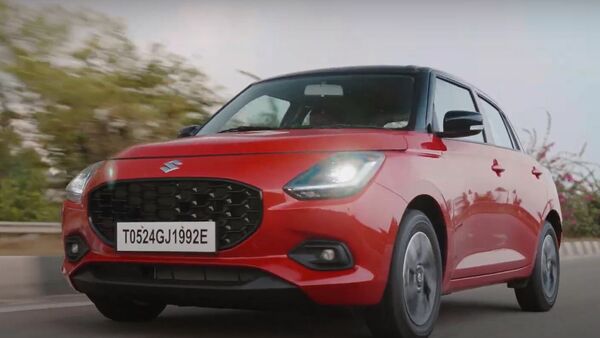
Confused between first and third-party car insurance? Here's everything to know
14 days ago | 23 Views
In the world of car insurance, two terms frequently arise - first-party and third-party insurance. While both provide coverage in the event of an accident or damage, they differ significantly in scope, benefits, and cost. Understanding these differences is crucial for every vehicle owner. Let's check out the intricacies of first and third-party car insurance to understand how they are different.
What's car insurance?
car insurance is a vital aspect when it comes to owning a vehicle. It provides financial protection against unforeseen circumstances such as accidents, theft, or damage. Typically, there are three parties involved in an insurance policy:-
First party - In an insurance contract, the person who purchases the insurance is known as the first party. It is the first party who makes the claim and pays for the insurance premium so that he or she can receive the benefits.
Second party - The second party is the insurance company that is providing the insurance for the vehicle. So, it is liable to pay for the damage or loss in case of an accident. The first party is also liable to pay for premium amount for the insurance to the second party.
Third-party - The third party can be anyone apart from the first and the second party. It can be any person who is affected by the actions of the first party while he or she is driving the vehicle that was insured by the second party.
Within the realm of car insurance, there are two primary categories: first-party insurance and third-party insurance. Each serves a distinct purpose and offers unique benefits to policyholders.
First-party car insurance:
First-party insurance, often referred to as comprehensive insurance, is a policy that covers damages to the insured vehicle and its occupants. It provides a wide range of coverage which can include collision damage, engine protection, theft, vandalism, and natural disasters.
One of the key features of first-party insurance is the coverage of medical expenses for the insured driver in the event of an accident. This aspect ensures that medical bills are taken care of, alleviating the financial burden on the policyholder.
Additionally, first-party insurance might include benefits such as roadside assistance, rental car reimbursement, zero depreciation, engine protection, return to invoice, NCB protection and coverage for personal belongings inside the vehicle. These additional perks enhance the overall value proposition of first-party insurance policies.
However, it's essential to note that first-party insurance premiums are generally higher compared to third-party insurance due to the extensive coverage provided. Vehicle owners must assess their individual needs and budget constraints when opting for first-party insurance.
Third-party car insurance:
Third-party insurance, also known as liability insurance, covers damages and injuries caused to third parties involved in an accident. Unlike first-party insurance, which primarily focuses on protecting the insured vehicle and its occupants, third-party insurance extends coverage to external parties affected by the insured vehicle's actions.
The primary purpose of third-party insurance is to provide financial protection against legal liabilities arising from accidents. This includes compensation for body injury and property damage and might even include legal fees incurred as a result of a lawsuit filed by the affected third party.
While third-party insurance offers limited coverage compared to first-party insurance, it fulfils the legal requirement for vehicle owners in many jurisdictions. In some countries, having third-party insurance is mandatory for registering and operating a vehicle on public roads.
One of the significant advantages of third-party insurance is its affordability. Premiums for third-party policies are generally lower than those for first-party insurance, making it an attractive option for budget-conscious individuals. However, it's essential to consider the trade-offs in coverage and potential out-of-pocket expenses in the event of an accident.
Key differences between first-party insurance and third-party insurance:
1. Coverage scope: First-party insurance provides comprehensive coverage for the insured vehicle and its occupants, including collision damage, theft, and medical expenses. In contrast, third-party insurance offers limited coverage for damages and injuries caused to third parties involved in an accident.
2. Cost: First-party insurance premiums are typically higher than those for third-party insurance due to the broader scope of coverage provided. Third-party insurance is more affordable but offers limited coverage, primarily focusing on legal liabilities.
3. Legal requirements: While first-party insurance is optional in most cases, third-party insurance is often mandatory for vehicle owners to comply with legal regulations. Operating a vehicle without adequate third-party insurance can result in penalties and legal consequences.
4. Additional benefits: First-party insurance policies often include additional benefits such as roadside assistance, rental car reimbursement, and coverage for personal belongings. Third-party insurance policies usually do not offer these extra perks.
In a nutshell
In summary, the distinction between first and third-party car insurance lies in the scope of coverage, cost, and legal requirements. First-party insurance provides comprehensive protection for the insured vehicle and its occupants, while third-party insurance focuses on covering damages and injuries to third parties. Understanding these differences is essential for vehicle owners to make informed decisions when selecting the right insurance policy for their needs and budget.
While first-party insurance offers extensive coverage and peace of mind, third-party insurance provides a cost-effective solution that fulfils legal obligations. Ultimately, the choice between first and third-party insurance depends on individual preferences, risk tolerance, and budget considerations. By weighing the pros and cons of each type of insurance, vehicle owners can ensure adequate protection against unforeseen circumstances on the road.
Read Also: scorpio n, thar, xuv700 help mahindra to post 18% suv sales growth in april

















